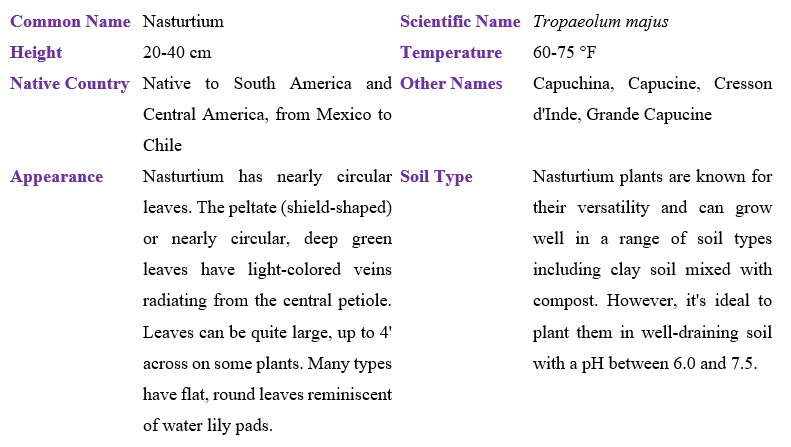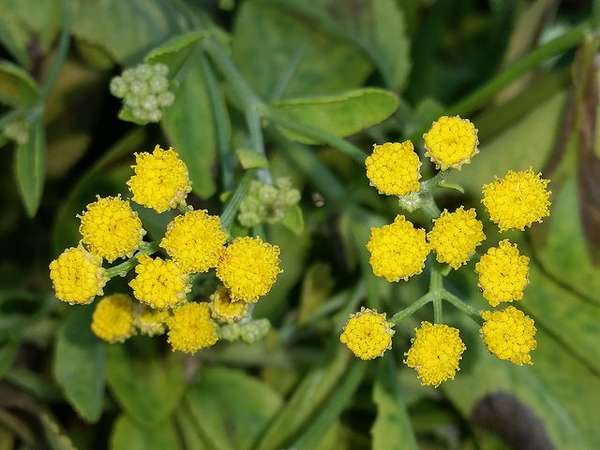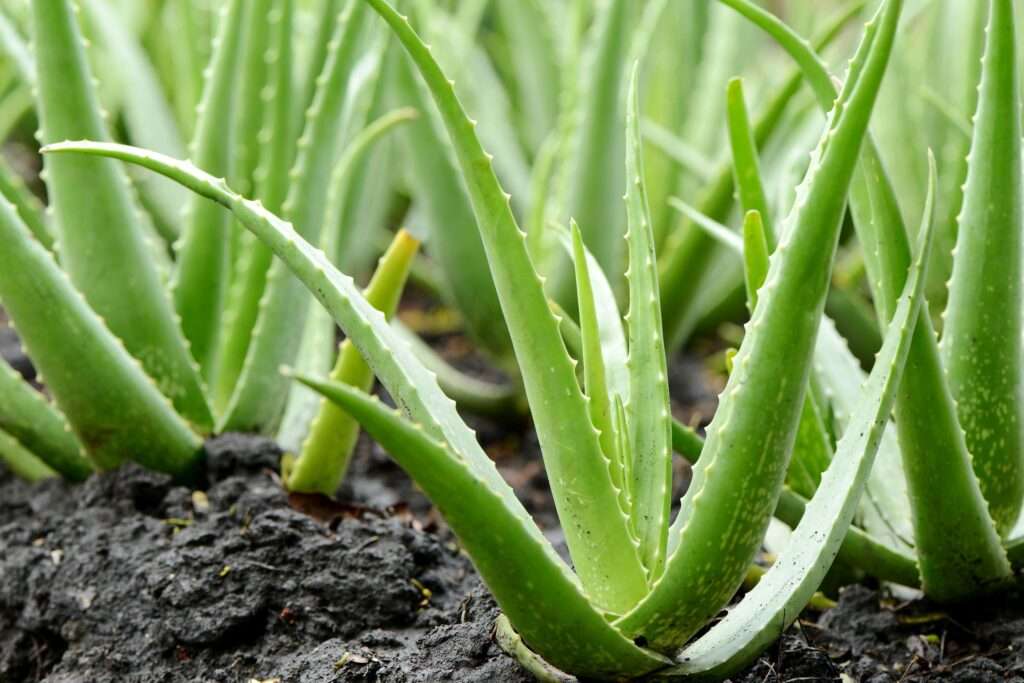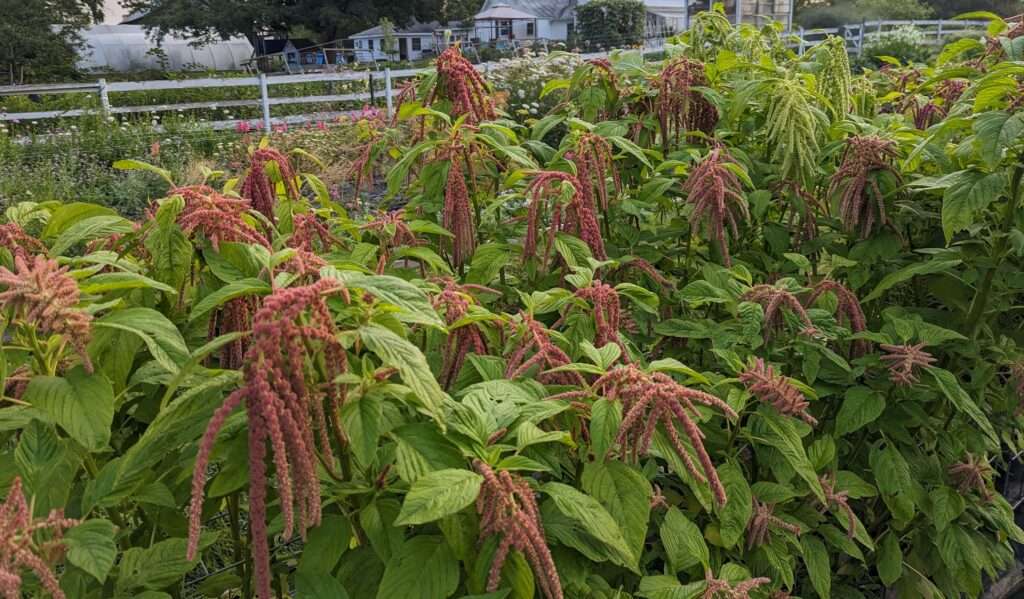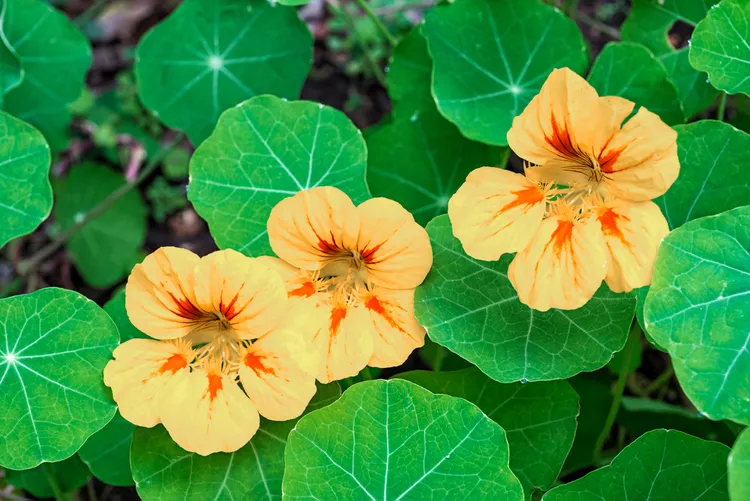
Description
The brightly colored blossoms of nasturtiums frequently have a spur on the back. While the majority are just one color, some have a faint center marking in a second colour. They typically feature five petals and a back nectar spur that resembles a funnel. The blooms expanded to a width of about 2.5 inches.
Habitat
This species is native to Europe, Central Asia, the Arabian Peninsula, Macaronesia, North and Northeast. Africa’s tropical regions.
Uses
The aerial parts are utilized in the production of pharmaceuticals. Nasturtium is taken in conjunction with other herbs to treat bronchitis, coughing, enlarged airways, and urinary tract infections (UTIs). Sometimes, in addition to other herbs, nasturtium can be applied topically to relieve mild muscular pain.

Varieties
Favorite nasturtium species among the hundreds known to exist are:
The ‘Alaska’ Series’ is a vibrant heirloom cultivar featuring variegated foliage that carries a range of coloured blooms above the foliage. This compact 8 to 10 inch spreading shrub is bushy and small, and it does well in poor soil.
The ‘Jewel’ Series’ yields rose, mahogany, crimson, orange, yellow, and other coloured flowers and grows quickly to a height of 16 inches. Although this variety blooms profusely, the flowers often disappear beneath the leaves.
‘Peach Melba’ blossoms are two-toned, yellow with red patches towards the center, and have a flavor similar to watercress. This dwarf, bushy plant grows to a mature height of 10 to 12 inches and spreads well in containers.
The trailing “Canary Creeper” cultivar grows best when planted next to trellises or fences so it has room to climb. This unusual type has yellow blooms that resemble canary wings and are arranged differently than those of other popular species.
Plant Care
- Light
The optimal conditions for nasturtium growth and blooming are full daylight with six to eight hours of direct sunshine every day. This plant may not bloom as much, but it can withstand some shade (three to six hours of sunlight). In fact, some shade is preferable when planting in a warm environment because scorching temperatures have the tendency to brown leaves.
- Soil
Remarkably, nasturtium blooms thrive on rather infertile soil that has adequate drainage. Overly rich soil will produce lots of foliage but not many flowers. Although it prefers a moderate quantity of moisture, this plant can withstand dry conditions and thrives best in soil with a neutral pH of 6 to 8.
- Water
Although they can tolerate more frequent watering when planted in a sunny vegetable patch or a greenhouse, napuntiums usually prefer a weekly watering schedule. The surrounding plants may have a high water requirement in these circumstances, which will cause the soil to dry out quickly. Mild droughts won’t harm Nasturtiums, but they will probably cause their blossoms to fade and their foliage to start looking spindly.
- Temperature and Humidity
USDA growth zones 9 through 11 are used for perpetual planting of some nasturtium types. Nonetheless, this plant is considered an annual in the majority of North American climates, having only one growth season to complete its life cycle. They can withstand a little frost but not a hard freeze, and they prefer daytime temperatures in the seventy-degree range. Furthermore, this plant is not too picky about humidity; it enjoys typical levels (between 30 and 50 percent). However, nasturtiums may not do well in very humid or very dry environments.
- Fertilizer
It is generally not advised to use synthetic fertilizers because many gardeners cultivate them for food. Organic gardeners rarely need to improve the soil before planting, unless the neighboring vegetables require it or the circumstances are extremely bad. Just keep in mind that strong soil characteristics might lead to nasturtiums producing more foliage and fewer flowers, so finding the right balance is crucial.
Table
